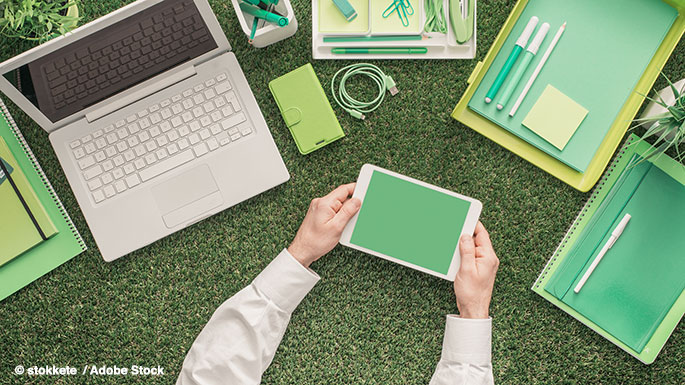Tried breaking your colleagues out of a well-worn habit? Does it feel like there’s just not enough hours in the day?
Workplace sustainability can feel like an oxymoron. Often times, operating a business means generating a fair amount of waste. But there are some simple steps we can take to nudge them in the right direction. These steps mirror the Environmental Protection Agency’s three steps to recycling, which is a great tool to help remember the greater goal. Try out these simple swaps and see if it doesn’t start to shift the focus of your team into a more ecologically minded direction.
1. Make it convenient
Put small recycling bins at every workstation, so you remove the barrier of having to walk over to a specific area to correctly sort your waste. Taking the guesswork out of where to toss that scratch paper can make a big difference long term. One word to the wise on this one is to make sure your team is educated on the proper recycling techniques, so they know what items are fair game to toss in their bin.
2. Make it a game
Sustainability isn’t necessarily glamorous, but it is critically important. Challenge your teams to compete for who can bring in the most electronics to recycle, who can generate the least amount of trash in a week, or who can get the most paperless clients onboard. There are lots of ways to incentivize the games- maybe even with a customized “trophy” recycling bin that the winners get to keep near their desks until the next challenge. If a trophy doesn’t cut it, check out this list of team building prize suggestions.
3. Little shift, big difference
Sometimes the small things make a big impact. Swap your buying strategies for paper and notepads to be 100% recycled materials. Look for refillable mechanical pencils and pens to extend the life of them and start a scratch paper bin in your supply room for misprinted items to become scratch paper for future meeting notes. These small changes are not only environmentally friendly, but they’re cost-effective as well!
All in all, you’re taking the first step just by informing yourself about the best ways to improve from where you’re at– and that’s awesome. Next time you’re ready to place that facilities order you’ll be armed and ready to tackle the big environmental challenges one small step at a time.





































































































































 Three Ways to Engage Teams and Clients to Maximize Your Recycling Program Engagement
Three Ways to Engage Teams and Clients to Maximize Your Recycling Program Engagement  How to Integrate Accessibility Into Your Sustainability Planning
How to Integrate Accessibility Into Your Sustainability Planning  Why Park Benches Can Promote Workplace Well-Being
Why Park Benches Can Promote Workplace Well-Being 
